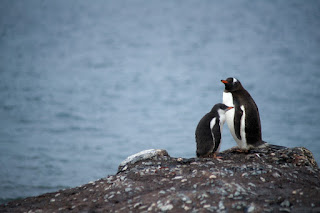Talking about Antarctica
Why and when should we remove our wisdom teeth in Antarctica?
Wisdom teeth are removed only when required because of cavities, dental infections can become dangerous quickly, so if someone develops a wisdom tooth infection while in Antarctica they may not be able to reach proper medical care before serious damage occurs and the same reason goes on with the removal of the appendix.
Does Antarctica have rainfall?
There's been no rain here for almost two million years but at the same time, 80 percent of the world's freshwater reserves are stored here in Antarctica.
Life in Antarctica
The concentration of nitrogen and oxygen is 50 times higher than in ordinary freshwater lakes few organisms living on planet Earth can survive in such an adverse environment. Recently, A team of biologist has unexpectedly found rock hugging animals beneath an antarctic ice shelf video footage appears to show 16 sponges accompanied by22 unidentified ones which could include branches it is the first time such immobile life has been found under an antarctic ice sheet suggesting life in Antarctica's harshest environments is more adaptable and more biodiverse than previously.
Interesting facts about Antarctica
If Antarctica's ice sheets melted, the world's oceans would rise by 60-65 meters (210-210flt) everywhere. Do you know that Antarctica is pushed into the earth by the weight of its ice sheet and if these sheets melted down, it would spring back about 500m approx 1625flt, though the process of spring back would be very slow i.e about 10,000 years to do so. Antarctica is also the best place in the world to find meteorites. The Antarctic ice marathon is an annual marathon.Risks in Antarctica for researchers
One of the biggest dangers to researchers and others living on the continent is actually fire. The dry environment makes it very possible and hard to stop. The continent experiences regular downhill winds, reaching 300km per hour, that blow out of the continental interior.



Comments
Post a Comment